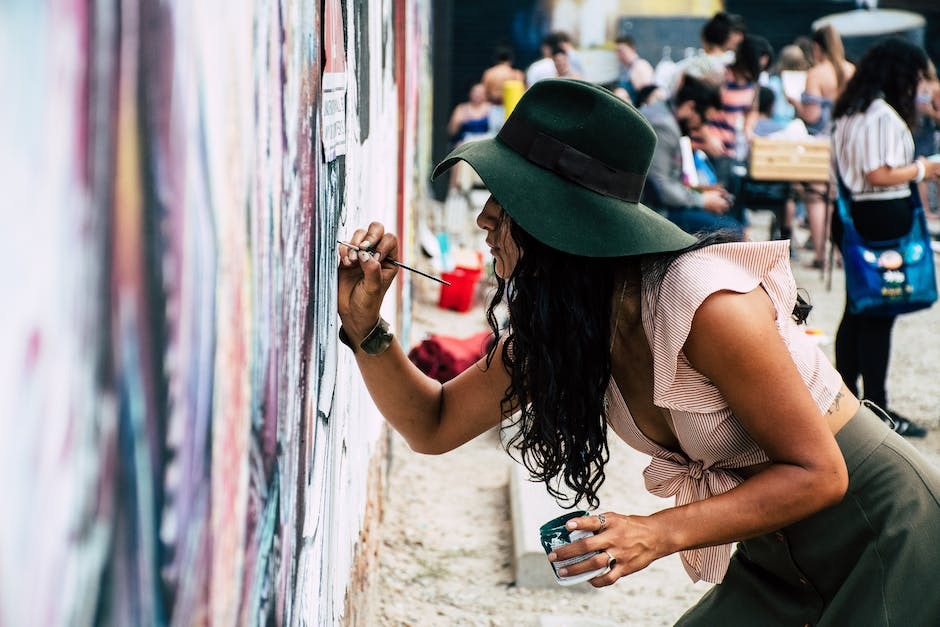Many people who grew up in the 1980s and ’90s may remember watching a perpetually happy and serene man with a big bushy beard and curly hair painting landscapes on public television. That man was Bob Ross, and he helped an entire generation find their inner artist and express themselves more fully. What they didn’t know is they were experiencing a type of art therapy.
While that may seem trivial because it was merely a television show, it has been shown that a connection to art is anything but. Art can help people connect with some of their deepest, most dormant experiences and emotions. That is because art can take what we internalize and allow us to access and outwardly express that which we once buried.
Here at Roots Through Recovery, we use art therapy because of its profound impact on allowing individuals to express their emotions. As Bob Ross famously said, “We don’t make mistakes, only happy little accidents.” We want to impart that whatever is going on in your life, it is not your fault, and most importantly, there is help out there.
What Is Art Therapy?
In art therapy, individuals use art and the creative process as therapeutic tools. Through art, clients can explore emotions that may be hard to verbalize. An art therapist will guide clients in creating a piece of art that reflects how they are feeling or what they are going through in that moment. Then, guided discussions will take place to work toward verbalizing thoughts and feelings.
Art therapy can take many different forms, including:
- Painting
- Drawing
- Working with clay
- Carving
- Sculpting
- Making Collages
Art Therapy in Treatment
According to the American Journal of Public Health, “The idea that creative expression can make a powerful contribution to the healing process has been embraced in many different cultures. Throughout recorded history, people have used pictures, stories, dances, and chants as healing rituals.”
Now, there is scientific evidence that backs these practices up. It has been shown that art can be used to help people put what they were once unable to convey into words. This can be especially true with traumatic experiences.
For example, Roots Through Recovery focuses on several groups of people that need specialized care for recovery. One of these specialized populations is veterans and active duty service members. According to the August 2018 medical journal Healthcare, “Evidence suggests that veterans are especially at risk of developing [post-traumatic stress disorder] PTSD due to the potential stressors associated with combat exposure and military-related trauma. The prevalence of PTSD among veterans ranges from 11 to 30% based on the area of service.”
Sadly some of the comorbidities of PTSD can be anxiety and depression, substance use disorders (SUDs), self-harm, and in extreme cases, suicide. Art therapy has been shown to help these service members and veterans cope with PTSD to avoid or recover from these dangerous comorbidities. But, of course, art therapy is not just for specialized populations; it can be used to help anyone struggling in their mental health journey.
How Can Art Therapy Help Me In My Recovery?
Sometimes, it can be hard to open up to others after a traumatic experience or when someone is struggling with deeper mental health issues. Harboring these emotions and experiences can be toxic and dangerous.
Have you ever heard the phrase, “We are only as sick as our secrets?” The thought process here is that when keeping things hidden away, others are unable to help. Art therapy helps to unearth these secrets so that they can be addressed and dealt with appropriately and responsibly.
Once we can express ourselves freely, we free ourselves from the confines of our minds. We now have the freedom to get better. We have the freedom to get all the help we need.
How Is Art Therapy Used at Roots Through Recovery?
At Roots Through Recovery, art therapy is but a brick in the foundation of recovery we try to establish for our clients. We utilize art therapy to help our clients break out of their protective emotional shells. By doing this, they can further get the help they need.
Once you can acknowledge what you are struggling with, you can go about the process of healing. Along with art therapy, our individualized approach may include:
- Traditional treatment approaches like cognitive-behavioral therapy (CBT)
- Holistic and mindfulness approaches like meditation and diaphragmatic breathing exercises
- Neuroscience approaches like transcranial magnetic stimulation (TMS) therapy
More than likely, your treatment plan will contain a combination of these therapies, among others that we offer.
Find Treatment With Roots Through Recovery
Roots Through Recovery is here to help you get to that positive place in life that everyone deserves to be. You do not have to suffer in secret anymore. As Bob Ross once said, “The secret to doing anything is believing that you can do it. Anything that you believe you can do strong enough, you can do. Anything. As long as you believe.”
Art therapy can help you live a joyous and fulfilling life. It can help you open up and experience the world you never thought possible. We believe in you. Now, all you have to do is believe in yourself.
Many people are unaware of the benefits of art therapy. It can often be seen as “eccentric” or experimental. However, there is evidence that now shows the efficacy of art therapy for treating anything from anxiety and depression to substance use disorders (SUDs) to post-traumatic stress disorder (PTSD). Art therapy can help those struggling to express the emotions that they once kept buried inside. It is essential to get these emotions out, so they can be dealt with and eventually overcome. If you feel that you or someone you love is struggling with mental health, Roots Through Recovery is here to help. For more information on our program, call us today at (562) 473-0827.




